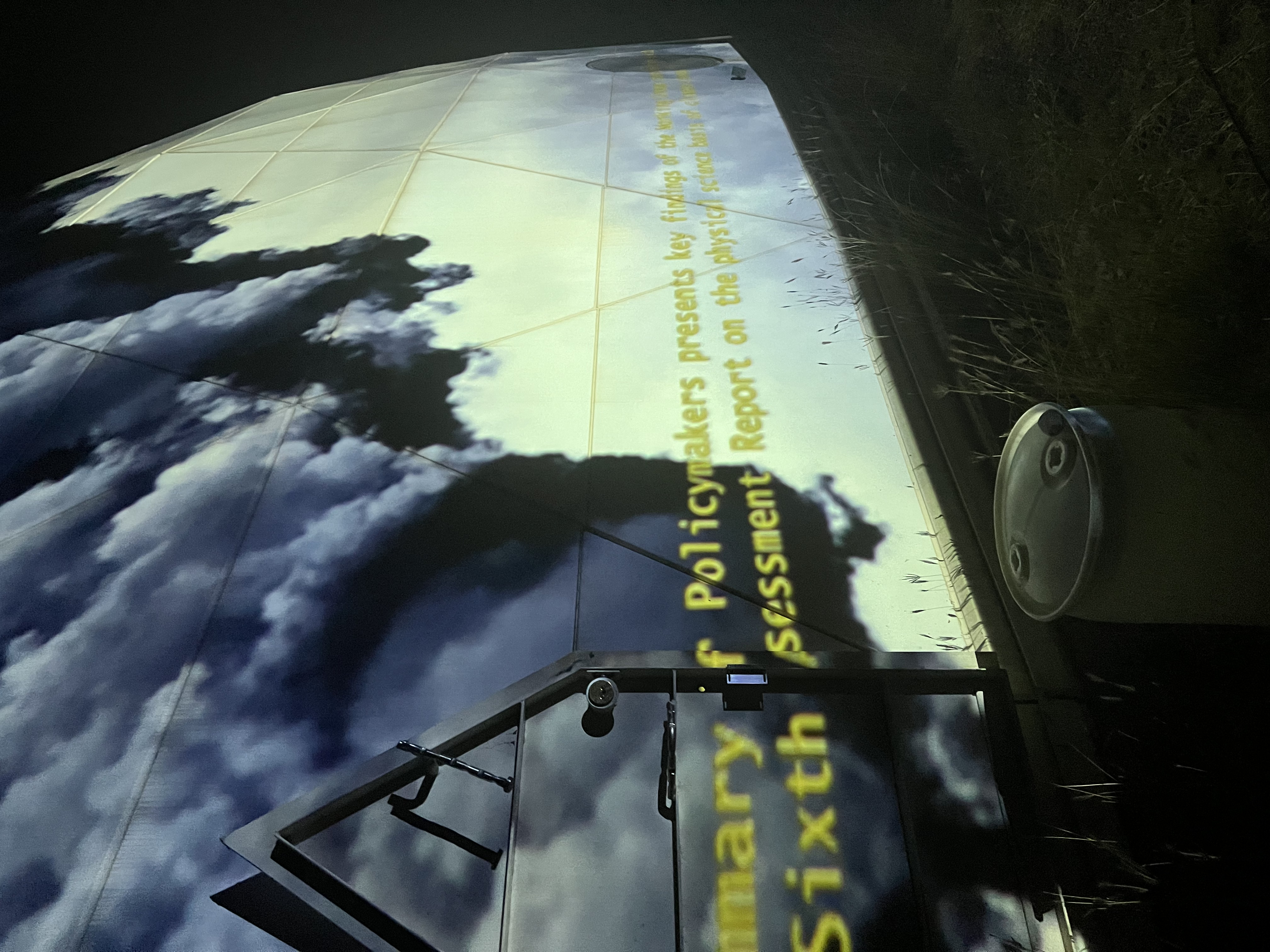Translation
Terra [Alteritities] at
Biosphere 2, Oracle AZ
May 6 - May 8, 2022
Curators: Paige Emery & Laure Michelon
Artists: K Allado-McDowell, Benjamin Bratton, Alice Bucknell, Paige Emery, Xin Liu, Laure Michelon, Sahej Rahal, Yasaman Sheri
May 6 - May 8, 2022
Curators: Paige Emery & Laure Michelon
Artists: K Allado-McDowell, Benjamin Bratton, Alice Bucknell, Paige Emery, Xin Liu, Laure Michelon, Sahej Rahal, Yasaman Sheri



Terra [Alterities]
More than ever, the climate crisis highlights the need to think in new ways that are posthuman, or “other-than-human”. We must adopt alien, nonhuman, planetary, and intergenerational perspectives as our own. By what avenues can this openness be pursued, while at the same time, recognizing our limits? What new communication technologies and techniques can we embrace toward these ends? What types of languages might emerge from the growing consciousness of a global catastrophe of our own making?Biosphere 2 is home to the largest closed ecological system ever created. It was built as a research facility for studying the environment of “Biosphere 1,” planet Earth. The 3.14-acre glass dome was originally meant to demonstrate the viability of ecological systems to support life in outer space. It consisted of a 2-year experiment that enclosed eight humans in artificial biomes. However, the anthropocentric attempt to create this observable environment turned out to be an overly-ambitious concept that could not materialize. With Biosphere 2 as the backdrop, this exhibition reflects on our current crisis-ridden condition, imagining how to respond with more-than-human ways that allow space for alterities that cannot be enclosed upon.
The relationship between Biosphere 1 (planet Earth) and Biosphere 2 (its closed-circuit copy) is not unlike how the world is modeled within our individual and collective minds. The relationship between nature ,including its biological infrastructure, and consciousness, the mind, and its technological byproducts, including language, reason, and art, has been at the core of debates in 21st-century philosophy. The exhibition cross-pollinates these two seemingly separate, yet deeply intertwined subjects. In doing so, Terra [Alterities] questions how to cultivate a more fertile space for reorienting ourselves anew to the humility required in the face of otherness and the intimacy necessary for encountering local, planetary, and post-planetary environments.
Terra [Alterities] is a Supercollider exhibit taking place at Biosphere 2, May 6th-8th, 2022 coinciding with the Analog Astronaut conference. The opening reception is May 6th at 12pm and the outdoor installation will be open until 9pm through May 8th. Open hours of Biosphere 2 are 9am-4pm.


TRANSLATION
Climate change is essentially a pattern, or series of patterns drawn from planetary scale data
collection that is synthesized and interpreted
through a climate model.
By the time the information makes its way to the
public, it has already been translated through
numerous phases and filters - sensing, dataset
collection, climate modeling, IPCC condensation
and filtration, and media translations. As our
culture becomes more dependent on the visualization of information, it necessitates a re-interpretation of this information.
Translation emphasizes both the success and
shortcomings of the language used to write original documents. The act of translation suggests an
alteration; a change in a given language’s form,
condition or nature, often with the intention to
explain the original subject matter in terms that
can be more easily understood. By translating
the IPCC Climate report into visuals generated by
a variety of neural networks, Translation aims
to adjust the way we can be informed by the data
in the report. These trained machine learning
models reinforce and reconstitute known imagery
through the bias inherent in a curated dataset,
producing visuals that broaden the report’s ability to be understood, and serve as a broader call
to action.
[ Supercollider ]
[ AQNB ]
